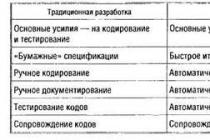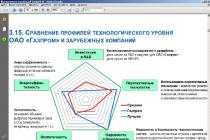Few people have not heard of sapropel, it is an organic deposit at the bottom of the lake, a valuable fertilizer.
Sapropel is used to make environmentally friendly organic fertilizers for seedlings, indoor and balcony flowers, vegetable gardens, farms, feed additives, Construction Materials, green fodder and bait.
Where is sapropel mined? At the bottom of old lakes, oxbow lakes, overgrown reservoirs of shallow depth.
Action plan.
We determine the quantity and quality of sapropel at the bottom of the reservoir, prepare a business plan for the enterprise, obtain permission from the local authorities for land allotment and water use licenses, purchase or independently manufacture equipment for the extraction, processing and packaging of sapropel, create a sales network. With a minimum of costs, you can meet the opening of a business of 120 thousand rubles. Payback period is not more than 6 months. Before development business plan it is necessary to obtain a certificate of the Private Entrepreneur, a license is not required.
Now about the technology itself and methods for extracting such a valuable fertilizer.
The extraction of sapropel from the bottom of the lake requires special preparation of the area. To do this, it is necessary to remove the forest stand and shrubs. The bulldozer prepares the site for further development within two shifts. The sapropel extraction technology provides for the presence of alluvium maps into which the pulp is transported. Maps are bunded by a bulldozer within 4 days.
The height of the dam is 3 meters. In each map sized 100*80 m, discharge wells from drainage pipes with a diameter of 700 mm are arranged to discharge clarified water. Extraction of sapropel from the reservoir is carried out by the dredger EKO-31. The assembly of the dredger and the installation of the pipeline is carried out on site.
The extraction of sapropel itself begins in May. The EKO-31 dredge sucks in sapropel together with water and transports the pulp to the shore through the slurry pipeline to the alluvium maps located in the near-edge part of the lake shoreline. The suction pipe of the dredger is closed with a fish protection net. Suction pipeline diameter - 400 mm, discharge - 300 mm. The length of the pipeline, taking into account the location of alluvium maps, does not exceed 300 m.
Alluvium maps, having a depth of 3 meters, are only half filled with pulp, for better freezing in winter period. Upon completion of work on filling in alluvium maps, which last from May to October, the workers conserve the dredger for the winter. From October, for 3 months, the pulp is in the alluvium maps until it reaches a moisture content of no more than 60%.
After that, the pulp from the first two cards is stored in piles by the DT-75 tractor.
In May, sapropel with a moisture content of 60% is loaded by a loader to KamAZ and transported to the sapropel processing shop. Sapropel is crushed on two crushing machines, which operate in two shifts each, to a crumb fraction of 2-6 mm. This crumb goes to the dosing line, and then to the packaging line B-350 P, Fl2 and PUSK-6, where the sapropel crumb is packed and packaged in polyethylene bags weighing 5kg, 10kg, 15kg, 25kg and polypropylene - weighing 35kg.
This is very profitable business, the profitability reaches 100%. And the fertilizer itself is in high demand.
Today, the most common methods of extracting sapropel from under water are:
- hydraulic
- hydromechanical
- clamshell
- excavator
- auger and pneumatic auger
- point-vacuum
- suction
- scraper-suction
- with locking cylinder
Hydraulic method of sapropel extraction
By washing the deposit with a jet of water, followed by suction of the pulp and transporting it through a floating pipeline to the shore. It has high productivity, requires large capital costs and areas for storage of extracted material and its preparation for processing. One of the most environmentally unsafe ways.
The method is not applicable in small and medium-sized businesses due to the significant cost. capital costs: purchase of equipment, construction of sedimentation tanks, significant time for dehydration of the extracted material.
The method is not economically acceptable for small business due to its significant fixed assets, reduplication of processes (washout and dilution during sapropel extraction, dehydration and drying after extraction to the surface)
It is used by specialized enterprises only with equipment already available previously purchased for other purposes, subject to areal cultivation of nearby territories, pastures, lands. Taking into account all the parameters of the technological process, the author does not recommend this method as effective in small and medium-sized businesses.
Hydromechanical method of sapropel extraction
It includes loosening the deposit with a mechanical cutter, partial mixing of sapropel with water, pumping out the resulting material with a mud pump to the surface. One of the most common. Has good performance.
It is suitable for the extraction of sapropel used for fertilizers, feed additives, recultivants. The release of hinged small-sized milling equipment and powerful mud pumps for it makes it possible to arrange production with mechanisms of various capacities and sizes, on order, taking into account the needs of a small enterprise.
The limitation in the application of the method is the significant depth of the lake, a protected natural reservoir, low portability in sapropel raw materials.
Clamshell method of sapropel extraction
Extraction of sapropel raw materials from under the water using a grapple installed on the platform. Rational in small business, economically justified, requires little production space.
It is inconvenient in transporting sapropel to the shore, requires additional transport equipment, and has a discontinuous cycle.
It is economical, good transformer (almost all equipment can be used in other production processes outside the extraction of sapropel) with a large range of performance regulation. Recommended by the author for small areal deposits of sapropel, low required productivity of the complex, various output of products from the extracted raw materials
Excavator method of sapropel extraction
Let's apply in drained lakes and from small depths. Not everywhere possible.
Screw and pneumatic-screw method of sapropel extraction
Extraction of sapropel from the bottom of the reservoir is carried out using a screw pump with or without air supply to dilute the extracted material. One of the promising mining methods for small and medium-sized businesses.
Differs in the insignificant cost of the equipment, the big range on productivity, does not demand settlers and dehydration. Possible sapropel intake natural humidity. eliminates a number of preparatory stages between the extraction and processing of sapropel. Economical.
Point-vacuum method of sapropel extraction
Extraction of sapropel from under the water is carried out by a vertical vacuum cylindrical intake with a locking mechanism in the lower part. Vacuum in the intake is created in order to exclude pollution of the reservoir and mixing of sapropel with water
Inefficient way. Applicable for laboratory work, extraction of sapropel for feed additives, for medicinal purposes, etc.
Economical. Popular in farms and in health mud baths.
Suction method for extracting sapropel
The intake of sapropel from the reservoir is carried out with the help of powerful self-priming pumps for pumping viscous substances. Its use is advisable in the presence of sapropel in a suspended state of low density. Becomes popular after the appearance on the European market of the corresponding small-sized and reliable pumps. Promising and economical for small needs of sapropel with its delivery after extraction to the surface over short distances
Scraper-suction method of sapropel extraction
The extraction of minerals is carried out by a scraper run over a sapropel layer with subsequent pumping of the material by a self-priming pump to the shore. Let's apply at dense deposits of sapropel at insignificant depth. It is mainly suitable for the production of sapropel fertilizers.
Method for extracting sapropel with a locking cylinder
Extraction of sapropel of natural moisture with a cutter-lock installed in the lower part. Unproductive. Economical.
Technological progress in foreign countries in the field of manufacturing compact and mobile equipment for cleaning water bodies from silting and recycling the extracted sludge makes it possible to use it by analogy in the processes of extraction and processing of sapropel as a raw material for the production of environmentally friendly fertilizers, feed additives, cosmetic and medicinal raw materials.
The tests of the universal amphibious dredger Truxor DM 4700V of the Swedish company Dorotea Mekaniska AB, together with a set of attachments, give grounds for its effective use in lake deposits of sapropels, dense and viscous bottom silts with a depth of up to 1.6 m. The company's efforts to maintain its superiority in this direction are now focused on increasing the extraction depth to 2.4 m or more. The first machines of this class with an increased depth of sludge intake were produced in 2009. With a diesel engine power of 27.2 hp. Suspension type Dredgepump 2500 on Truxor DM 4700V equipment allows extracting up to 30 m3 of sapropel per hour and moving it along a floating flexible pipeline over 50 m. One person controls the mining process. The equipment is certified by the European committee. The interest in this technique among Russian small businesses and farmers is not accidental: the dredger is easy to operate, mobile, and moves by itself on water, land, and a swamp. Does not require installation and dismantling when moving from one lake to another. There is a representative of the company in Russia, which ensures its timely delivery, customs clearance, provision with the necessary components and repair units. No special skills or permissions are required to operate the equipment. The cycle of preparing a lake sapropel deposit for development includes coastal strengthening, construction of entrances and moorings on the water, cleaning of algae and grass, cleaning the water surface from branches, roots and trunks of fallen trees, and more .... Change of attachments for such operations is carried out by one person in no more than 20 minutes. The cost is available for entrepreneurs and farmers. Thus, in 2009 the basic set of equipment did not exceed 81,000 euros in value. The payback period for Truxor DM 4700V in production schemes for the extraction and processing of sapropel for fertilizers is no more than 3.5 years. To work at the lake sapropel deposit, a technological regulation or a project is required. The project is agreed to local authorities authorities, environmental protection department, etc. Based on it, a permit for water use is issued and the profitability of the entire business is ensured from the start of production to processing and packaging. Designs sites for the production of fertilizers from sapropel and supplies equipment to the Sapropel Center. The usual terms for the implementation of a set of works are from 1.5 to 2.5 months. Projects for small businesses include a description of the technology of work and an economic calculation part with data on the specification of equipment, the cost of a unit of production, the payback period of the enterprise, its profitability, energy intensity, and staffing. Excellent results are shown by the Truxor DM 4700V complex with containers for coastal dewatering of TenCate geotube sludge, especially in the production of sapropel for granular fertilizers and cosmetic sapropel raw materials. Such a complex excludes settling tanks for freezing raw materials, mechanical dehydrators (separators, centrifuges, decanters). Similar Russian equipment not produced. The set project + equipment does not exceed 4 million rubles in cost and is supplied by the Center for sapropel within 3 months. Products manufactured by the farm using this equipment and materials: granular and bulk fertilizers, feed additives, sapropel-vitamin top dressing, viscous therapeutic mud, medical and veterinary applications, cosmetic cheese.
Details of the content of projects for the production of various types of products in farms using this technique on shallow lakes can be found in the annexes to www.saprex.ru
New technological developments of the Sapropel Center (Russia, Astrakhan) open up new opportunities in the extraction of lacustrine sapropels without the use of expensive floating dredgers and floating slurry pipelines, facilitate the transition from seasonal to year-round mining, virtually eliminating seasonal equipment downtime and increasing its annual productivity by almost a factor of twice.

In 2017-2018, the Center at one of the sapropel deposits in the northwestern part of Russia applied innovative extraction of the necessary for the production of natural environmentally friendly organic fertilizers raw materials through inclined wells, passed in the lower part of the productive layer from the shore by self-propelled equipment for inclined horizontal drilling.

To conduct pilot tests of the proposed technology for the extraction of sapropel of natural moisture without involving lake water in the process, a coastal complex consisting of a self-propelled HDD device, a mobile diesel hydroelectric station and downhole pumping and production equipment (SNDO) with an inclined horizontal slurry discharge pipe was used.

The deposit has geological reserves of sapropel 2.36 million tons, the width of the lake is 380 m, the length is 1.3 km, the depth of development is from 4 to 14 m, the thickness of the productive layer is from 3 to 8.7 m.
A technological well was drilled from the eastern to the western coast along the bottom of the productive layer of sapropel;
The pumping and extraction mechanism is a hydraulic borehole high-pressure submersible dredger of the Powerdredging PD3000 type and a forced loosening nozzle. It was powered by a mobile diesel hydroelectric station installed on the shore of the lake. The extraction of sapropel was carried out by chamber slaughter from the western shore and, as the productive layer was worked out, moved towards the eastern.

The Powerdredging PD3000 dredge is used for various mining operations, incl. for the extraction of sand and ASG, pumping and removal of municipal sludge, cleaning of reservoirs. The dredging pump allows pumping up to 800 m 3 of pulp per hour with a maximum concentration of pumped materials of 47% water and 53% solids. Included with the dredger there is a nozzle-grinder of large clay deposits, debris, branches, silt, overgrowth, as well as a ripper of dense layers of sapropel. The characteristics of the dredger are presented below:

|
Power, kW / hp |
|
|
Max. head, m |
|
|
Max. pulp capacity, m³/h |
|
|
Max. pulp capacity, m3/h |
|
|
Pulp concentration, % (dry mix/water) |
|
|
Discharge flange** DN, inch (mm) |
7" (178) / 9" (229) |
|
Max. size of solid inclusions, mm |
|
|
Power source (hydraulic system) |
open/closed center |
|
Hydraulic motor shaft speed, rpm |
|
|
Rated flow, l/min |
|
|
Max. pressure, bar |
|
|
Pressure in the drainage line, bar, no more |
|
|
Hydraulic ports, type |
DKO-S (male thread cone 24°) |
|
Hydraulic oil filtration, µm |
|
|
Overall size (LxWxH), mm |
|
** the delivery set includes a pressure slurry pipeline (1.5 m) with a flanged end connection DN178 mm or 229 mm.
The Powerdredging PD3000 dredger in the technological mode of developing a lake sapropel deposit is compatible with the hydraulic diesel station SWAMPKING 32-210, HYDRA-TECH 150DJD/150DJV, HYDRA-TECH 150DD/150DV or HYDRA-TECH 200DD/200DV.


In the pilot development of a sapropel deposit, the bottomhole was advanced by pulling a pulp-dispensing pipe with a pumping mechanism along a previously drilled horizontally inclined well with a onshore HDD device. The mining process was completed at the eastern boundary of the sapropel layer. Pasty liquid sapropel was delivered to the onshore warehouse from several bunded checks, serving as a temporary warehouse of raw materials before its processing into a commercial product.
After the work was completed in one horizontally inclined well, the process was repeated in the next one, passed parallel to the previous one at a calculated distance from each other.
In the process of exploitation, the productivity of sapropel with natural moisture content of more than 250 m 3 /hour was achieved. Capital investments, compared with traditional prey sapropel with a dredger decreased by 42%, energy costs for the extraction of 1 m 3 of natural moisture sapropel decreased by 28%, and the cost of production was less than 52 rubles/m 3 .
With the geological surveys performed at the deposit and the calculation of its sapropel reserves, preparation for the launch of mining complexes consists of a technological survey of the deposit, the selection of an industrial site for the construction of warehouses for the extracted raw materials and processing shops, and the preparation of a technical project. In time, it takes no more than 2.5 months.
Manufacturing and delivery to the place of operation of downhole and onshore equipment takes 1.5-2 months. Installation work at the field and preparation of equipment for work in time last no more than 4 hours.
The cost of the mining complex with a technical design designed for a capacity of up to 250 m 3 of natural moisture sapropel per hour with a lake deposit width of up to 400 m, a layer depth of up to 14 m and a supply range of raw materials to warehouses at a distance of no more than 450 m does not exceed 18 million .rubles
From the sapropel extracted in this way, the technology provides for the production of organic environmentally friendly fertilizers in pasty, granulated, tableted and loose form, soil formers and recultivants, which are used for the needs of agricultural producers in Russia and for export to the countries of Central, South-East Asia, the Middle East, as a material, able to recreate farmland in desert wet areas, transform depleted lands into soils with a high content of humus. Some types of sapropel are used in the production of medical and cosmetic preparations, potassium and sodium humates, feed additives for poultry, cattle, and pigs.
The workshop processing sapropel into marketable products consists of a set of equipment for dehydration, grinding, screening, mixing, drying and packaging of the finished product in different kinds containers.


Market Wholesale price bulk fertilizers from sapropel according to GOST R 54000-2010 with an organic content of more than 30% is at least 5800 rubles / m 3 on the domestic market, $ 380 on the external market, paste-like cosmetic mud - 34 thousand rubles. and US$870, respectively.


Today, the Sapropel Center conducts prospecting and evaluation of productive bottom silts and sapropel and prepares technological solutions for their development using innovative mining technology not only in Russia and the post-Soviet space, but also in countries such as Vietnam, Poland, Ethiopia, Georgia, Estonia, Lithuania.
/ Extraction of sapropel
Sapropel extraction
What is sapropel?
Sapropel (from the Greek words "sapros" - rotten and "pelos" - silt, mud) - these are centuries-old bottom sediments of freshwater reservoirs, which were formed from dead aquatic vegetation, the remains of living organisms, plankton, and particles of soil humus.
River and pond silt - sapropel, has long been used as a fertilizer to improve soil fertility - everyone knows that since ancient times, Egyptian grain growers have received three good harvests a year using the silt of the Nile River.
The technology of sapropel extraction is not only environmentally safe for the reservoir, but also useful: during the extraction of sapropel, reservoirs rejuvenate for several thousand years, which contributes to the development of both the reservoir and its environment.
Almost all types of sapropel and silt (with the exception of siliceous, pink, found in the southern regions) are very useful for vegetable gardens and can be used as organic fertilizer if there are no industrial enterprises near water bodies that poison the environment.
The purest sapropel is found in places where fish are found, there are algae, flowering plants, and crustaceans.
Sapropel is a long-acting fertilizer, up to 10 years, and its excess is not detrimental to plants.
There are other ways of using sapropel and products of its processing: when tunneling and drilling for oil, as an absorbent; as a filler in the production of rubber, as well as a component in emulsions and as a feed additive for cattle.
Sapropel resources in the world
 Particularly intensive formation of sapropels occurs in the lakes of the middle zone of Europe and Asia. On the American continent, sapropel deposits are confined to the region of the Great Lakes (Canada and the USA). IN Western Europe sapropel resources are severely depleted. Water bodies containing sapropels were typical for Germany, Poland, Scandinavian countries and, to a lesser extent, for France and Great Britain. Numerous sapropel deposits are found in Lithuania, Latvia, Belarus and Ukraine, and Russian Federation, with sapropel reserves of 2.6 billion tons, occupies one of the leading places in the world.
Particularly intensive formation of sapropels occurs in the lakes of the middle zone of Europe and Asia. On the American continent, sapropel deposits are confined to the region of the Great Lakes (Canada and the USA). IN Western Europe sapropel resources are severely depleted. Water bodies containing sapropels were typical for Germany, Poland, Scandinavian countries and, to a lesser extent, for France and Great Britain. Numerous sapropel deposits are found in Lithuania, Latvia, Belarus and Ukraine, and Russian Federation, with sapropel reserves of 2.6 billion tons, occupies one of the leading places in the world.
How is sapropel mined?
There is nothing identical in nature, including sapropels. They are divided by content. organic matter, by the presence of mineral particles and the composition of the ash. Therefore, when developing, extracting and processing sapropel, it must be understood that even in one reservoir in its different parts and at different depths there can be two, three or more types of sapropel or silt, each of which requires a certain method of extraction and further processing.
Depending on the characteristics of the reservoir, various types of dredgers can be used to extract sapropel.
For small and medium reservoirs, old lakes, oxbow lakes, overgrown ponds of small depth (up to 4-5 m), the use of Piranha mini dredgers is effective.
 Manual dredgers weigh from 15 to 245 kg and can be transported on a trailer passenger car, with a capacity of up to 30 cubic meters per hour, which makes it possible to use them even in small summer cottages where there is no access to any other equipment, the gasoline drive of the engines allows the use of mini dredgers at the objects most remote from the infrastructure, and the low noise level of the engines makes it possible to develop sapropel deposits near residential buildings and even in nature reserves!
Manual dredgers weigh from 15 to 245 kg and can be transported on a trailer passenger car, with a capacity of up to 30 cubic meters per hour, which makes it possible to use them even in small summer cottages where there is no access to any other equipment, the gasoline drive of the engines allows the use of mini dredgers at the objects most remote from the infrastructure, and the low noise level of the engines makes it possible to develop sapropel deposits near residential buildings and even in nature reserves!
Due to the design features of manual dredgers, depending on the type of sediments being pumped, the sedimentation pond for bottom sediments can be located at a distance of 50-150 m from the mini dredger, while maintaining its high performance.
The Piranha mini dredger is an excellent solution to the problem of collecting sapropel or silt for households located in densely built-up or "inhabited" settlements where it is not possible to store pumped bottom sediments (pulp). Especially for these purposes, a manual dredger is equipped with bag for collecting bottom sediments, with which you can collect silt or sapropel without harming the landscape of the site.
Hand dredgers are very effective for cleaning water bodies in golf clubs: the extracted sludge can be immediately used to fertilize lawns, while manually delivering a mini dredger to a reservoir will not harm an expensive lawn!
Usually sapropel extraction begins in May as the water level drops and continues until frost.














